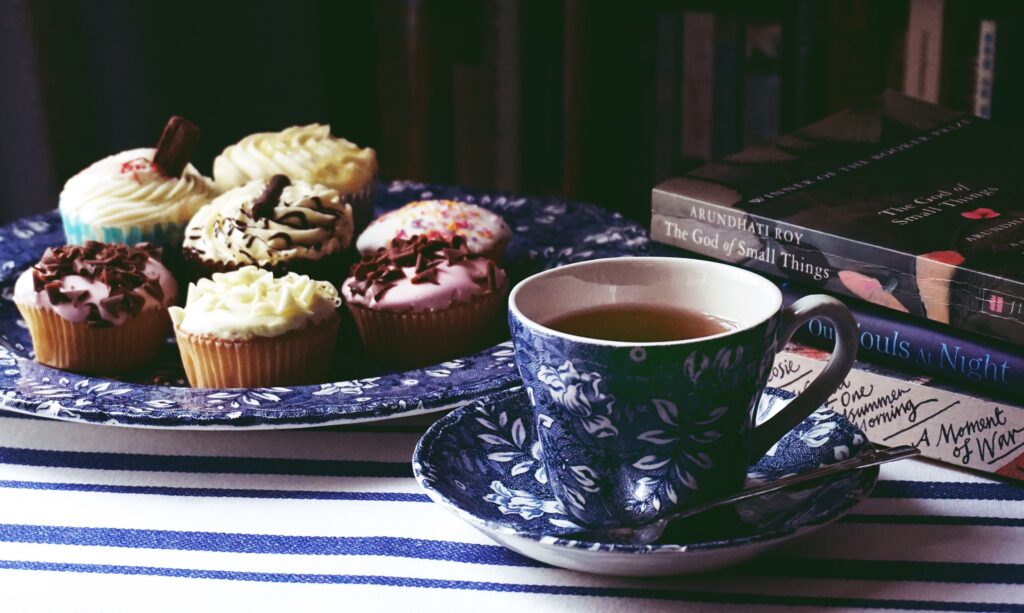
As far back as I remember, I loved tea.
My Mum used to say when I was little,
I would shout out “anna capa tea,” which meant “I wanted a cup of tea.”
If they didn’t understand me
I used to stamp my foot and get a bit frustrated. I was even hooked back then!
And if you know anything about Yorkshire, “us Yorkshire folk like our tea.”
We even have our own unique tea called Yorkshire tea and have a nickname for it called ‘a cuppa’
Yes, we certainly stand out for “Our Cuppa”!
Victorian Tea
Victorians also loved their tea.
So much so they had a custom of treating themselves to what we call “Afternoon tea,” which is still popular today, especially in hotels and tea rooms.
A very traditional custom with finger sandwiches, sweets, cakes, and scones.
A slice of lemon and sugar was served as well.
We see this tradition played out in films time and time again with Victorian women dressed up in their finery, taking tea in conservatory-type buildings. Very romantic!
Also been captured in many oil paintings over the years. To name a few:-
”At the Tea Table” (Konstantin Korovin, 1888)
”Five O’clock Tea” (Julius LeBlanc Stewart, 1883–4)
“Tea for Two” (George Goodwin Kilburne, 1839–1924)
“Women Taking Tea” (Albert Lynch, 1851
There were three categories associated with taking tea in the Victorian Times.
Elevenses.
This was a tea taken late morning, usually about 11.00 am.
Very similar to afternoon tea, but not as indulgent.
Afternoon Tea (see above)
High Tea
Associated with the working class of the industrialised north.
It was usually taken after eating their evening meal. They would have a cup of strong tea.
The terminology was to differentiate between afternoon tea, which is the upper classes taking tea in comfortable upholstered relaxing chairs oppose to working-class people sitting in hard wooden high-backed seats.
Why milk?
The theory is the milk was put in first to prevent the porcelain cup from shattering with the hot boiling water. Also, the milk sweetened the tea, giving it a smoother flavour.
My Cup of Tea
I thought about tea a lot over the years, as it has been a big part of my life. It has got me through the best and worst times.
“We’ll put the kettle on!”
This British saying is a regular occurrence no matter what the event is, a regular clockwork event in most households and workplaces here.
So Why is tea so important?
Well, to me it’s comforting and when I need a break, any excuse to put the kettle on and it’s a sure way to get me through the day.
I really don’t know if I could manage a day without tea.
It’s refreshing, comforting, relaxing, and keeps me going.
I have written my best scripts while drinking tea.
On set, I have a special flask for tea
I direct my best scenes with a mug of tea.
When we are away, the first thing I ask for is a cup of tea.
Even in hotel rooms in the UK, there is a kettle with tea bags and milk on a quaint little tray in the room. We miss this abroad!
I suppose it is something that we can associate with routine and that is a comfort.
Right, I am going to clock off now. It’s time to put the kettle on!:)